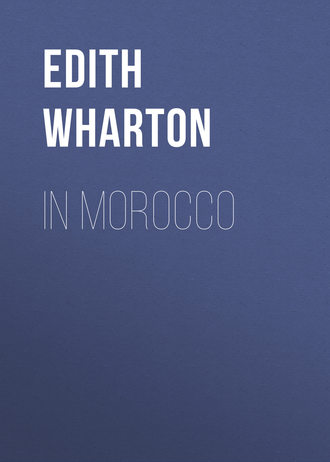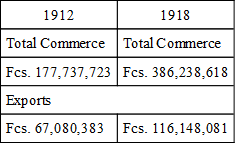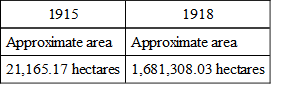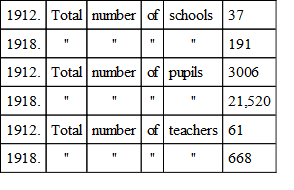 полная версия
полная версияIn Morocco
For not only was France to be supplied with provisions, but the confidence in her ultimate triumph was at all costs to be kept up in the native mind. German influence was as deep-seated as a cancer: to cut it out required the most drastic of operations. And that operation consisted precisely in letting it be seen that France was strong and prosperous enough for her colonies to thrive and expand without fear while she held at bay on her own frontier the most formidable foe the world has ever seen. Such was the "policy of the smile," consistently advocated by General Lyautey from the beginning of the war, and of which he and his household were the first to set the example.
III
The General had said that he would not "break the egg-shell"; but he knew that this was not enough, and that he must make it appear unbreakable if he were to retain the confidence of the natives.
How this was achieved, with the aid of the few covering troops left him, is still almost incomprehensible. To hold the line was virtually impossible: therefore he pushed it forward. An anonymous writer in L'Afrique Française (January, 1917) has thus described the manœuvre: "General Henrys was instructed to watch for storm-signals on the front, to stop up the cracks, to strengthen weak points and to rectify doubtful lines. Thanks to these operations, which kept the rebels perpetually harassed by always forestalling their own plans, the occupied territory was enlarged by a succession of strongly fortified positions." While this was going on in the north, General Lamothe was extending and strengthening, by means of pacific negotiations, the influence of the Great Chiefs in the south; and other agents of the Residency were engaged in watching and thwarting the incessant German intrigues in the Spanish zone.
General Lyautey is quoted as having said that "a work-shop is worth a battalion." This precept he managed to put into action even during the first dark days of 1914, and the interior development of Morocco proceeded side by side with the strengthening of its defenses. Germany had long foreseen what an asset northwest Africa would be during the war; and General Lyautey was determined to prove how right Germany had been. He did so by getting the government, to whom he had given nearly all his troops, to give him in exchange an agricultural and industrial army, or at least enough specialists to form such an army out of the available material in the country. For every battle fought a road was made;22 for every rebel fortress shelled a factory was built, a harbor developed, or more miles of fallow land ploughed and sown.
But this economic development did not satisfy the Resident. He wished Morocco to enlarge her commercial relations with France and the other allied countries, and with this object in view he organized and carried out with brilliant success a series of exhibitions at Casablanca, Fez and Rabat. The result of this bold policy surpassed even its creator's hopes. The Moroccans of the plain are an industrious and money-loving people, and the sight of these rapidly improvised exhibitions, where the industrial and artistic products of France and other European countries were shown in picturesque buildings grouped about flower-filled gardens, fascinated their imagination and strengthened their confidence in the country that could find time for such an effort in the midst of a great war. The Voice of the Bazaar carried the report to the farthest confines of Moghreb, and one by one the notabilities of the different tribes arrived, with delegations from Algeria and Tunisia. It was even said that several rebel chiefs had submitted to the Makhzen in order not to miss the Exhibition.
At the same time as the "Miracle of the Marne" another, less famous but almost as vital to France, was being silently performed at the other end of her dominions. It will not seem an exaggeration to speak of General Lyautey's achievement during the first year of the war as the "Miracle of Morocco" if one considers the immense importance of doing what he did at the moment when he did it. And to understand this it is only needful to reckon what Germany could have drawn in supplies and men from a German North Africa, and what would have been the situation of France during the war with a powerful German colony in control of the western Mediterranean.
General Lyautey has always been one of the clear-sighted administrators who understand that the successful government of a foreign country depends on many little things, and not least on the administrator's genuine sympathy with the traditions, habits and tastes of the people. A keen feeling for beauty had prepared him to appreciate all that was most exquisite and venerable in the Arab art of Morocco, and even in the first struggle with political and military problems he found time to gather about him a group of archæologists and artists who were charged with the inspection and preservation of the national monuments and the revival of the languishing native art-industries. The old pottery, jewelry, metal-work, rugs and embroideries of the different regions were carefully collected and classified; schools of decorative art were founded, skilled artisans sought out, and every effort was made to urge European residents to follow native models and use native artisans in building and furnishing.
At the various Exhibitions much space was allotted to these revived industries, and the matting of Salé, the rugs of Rabat, the embroideries of Fez and Marrakech have already found a ready market in France, besides awakening in the educated class of colonists an appreciation of the old buildings and the old arts of the country that will be its surest safeguard against the destructive effects of colonial expansion. It is only necessary to see the havoc wrought in Tunisia and Algeria by the heavy hand of the colonial government to know what General Lyautey has achieved in saving Morocco from this form of destruction, also.
All this has been accomplished by the Resident-General during five years of unexampled and incessant difficulty; and probably the true explanation of the miracle is that which he himself gives when he says, with the quiet smile that typifies his Moroccan war-policy: "It was easy to do because I loved the people."
THE WORK OF THE FRENCH PROTECTORATE, 1912-1918
PORTS
Owing to the fact that the neglected and roadless Spanish zone intervened between the French possessions and Tangier, which is the natural port of Morocco, one of the first pre-occupations of General Lyautey was to make ports along the inhospitable Atlantic coast, where there are no natural harbours.
Since 1912, in spite of the immense cost and the difficulty of obtaining labour, the following has been done:
Casablanca. A jetty 1900 metres long has been planned: 824 metres finished December, 1917.
Small jetty begun 1916, finished 1917: length 330 metres. Small harbour thus created shelters small boats (150 tons) in all weathers.
Quays 747 metres long already finished.
16 steam-cranes working.
Warehouses and depots covering 41,985 square metres completed.
Rabat. Work completed December, 1917.
A quay 200 metres long, to which boats with a draught of three metres can tie up.
Two groups of warehouses, steam-cranes, etc., covering 22,600 square metres.
A quay 100 metres long on the Salé side of the river.
Kenitra. The port of Kenitra is at the mouth of the Sebou River, and is capable of becoming a good river port.
The work up to December, 1917, comprises:
A channel 100 metres long and three metres deep, cut through the bar of the Sebou.
Jetties built on each side of the channel.
Quay 100 metres long.
Building of sheds, depots, warehouses, steam-cranes, etc.
At the ports of Fedalah, Mazagan, Safi, Mogador and Agadir similar plans are in course of execution.
COMMERCE
COMPARATIVE TABLES

ROADS BUILT

RAILWAYS BUILT

LAND CULTIVATED

JUSTICE
1. Creation of French courts for French nationals and those under French protection. These take cognizance of civil cases where both parties, or even one, are amenable to French jurisdiction.
2. Moroccan law is Moslem, and administered by Moslem magistrates. Private law, including that of inheritance, is based on the Koran. The Sultan has maintained the principle whereby real property and administrative cases fall under native law. These courts are as far as possible supervised and controlled by the establishment of a Cherifian Ministry of Justice to which the native Judges are responsible. Special care is taken to prevent the alienation of property held collectively, or any similar transactions likely to produce political and economic disturbances.
3. Criminal jurisdiction is delegated to Pashas and Cadis by the Sultan, except of offenses committed against, or in conjunction with, French nationals and those under French protection. Such cases come before the tribunals of the French Protectorate.
EDUCATION
The object of the Protectorate has been, on the one hand, to give to the children of French colonists in Morocco the same education as they would have received at elementary and secondary schools in France; on the other, to provide the indigenous population with a system of education that shall give to the young Moroccans an adequate commercial or manual training, or prepare them for administrative posts, but without interfering with their native customs or beliefs.
Before 1912 there existed in Morocco only a few small schools supported by the French Legation at Tangier and by the Alliance Française, and a group of Hebrew schools in the Mellahs, maintained by the Universal Israelite Alliance.

In addition to the French and indigenous schools, sewing-schools have been formed for the native girls and have been exceptionally successful.
Moslem colleges have been founded at Rabat and Fez in order to supplement the native education of young Mahometans of the upper classes, who intend to take up wholesale business or banking, or prepare for political, judicial or administrative posts under the Sultan's government. The course lasts four years and comprises: Arabic, French, mathematics, history, geography, religious (Mahometan) instruction, and the law of the Koran.
The "Ecole Supérieure de la langue arabe et des dialectes berbères" at Rabat receives European and Moroccan students. The courses are: Arabic, the Berber dialects, Arab literature, ethnography, administrative Moroccan law, Moslem law, Berber customary law.
MEDICAL AID
The Protectorate has established 113 medical centres for the native population, ranging from simple dispensaries and small native infirmaries to the important hospitals of Rabat, Fez, Meknez, Marrakech, and Casablanca.
Mobile sanitary formations supplied with light motor ambulances travel about the country, vaccinating, making tours of sanitary inspection, investigating infected areas, and giving general hygienic education throughout the remoter regions.

Night-shelters in towns. Every town is provided with a shelter for the indigent wayfarers so numerous in Morocco. These shelters are used as disinfection centres, from which suspicious cases are sent to quarantine camp at the gates of the towns.
Central Laboratory at Rabat. This is a kind of Pasteur Institute. In 1917, 210,000 persons were vaccinated throughout the country and 356 patients treated at the Laboratory for rabies.
Clinics for venereal diseases have been established at Casablanca, Fez, Rabat, and Marrakech.
More than 15,000 cases were treated in 1917.
Ophthalmic clinics in the same cities gave in 1917, 44,600 consultations.
Radiotherapy. Clinics have been opened at Fez and Rabat for the treatment of skin diseases of the head, from which the native children habitually suffer.
The French Department of Health distributes annually immense quantities of quinine in the malarial districts.
Madame Lyautey's private charities comprise admirably administered child-welfare centres in the principal cities, with dispensaries for the native mothers and children.
VII
A SKETCH OF MOROCCAN HISTORY
Note.—In the chapters on Moroccan history and art I have tried to set down a slight and superficial outline of a large and confused subject. In extenuation of this summary attempt I hasten to explain that its chief merit is its lack of originality.
Its facts are chiefly drawn from the books mentioned in the short bibliography at the end of the volume; in addition to which I am deeply indebted for information given on the spot to the group of remarkable specialists attached to the French administration, and to the cultivated and cordial French officials, military and civilian, who, at each stage of my rapid journey, did their best to answer my questions and open my eyes.
I
THE BERBERS
In the briefest survey of the Moroccan past account must first of all be taken of the factor which, from the beginning of recorded events, has conditioned the whole history of North Africa: the existence, from the Sahara to the Mediterranean, of a mysterious irreducible indigenous race with which every successive foreign rule, from Carthage to France, has had to reckon, and which has but imperfectly and partially assimilated the language, the religion, and the culture that successive civilizations have tried to impose upon it.
This race, the race of Berbers, has never, modern explorers tell us, become really Islamite, any more than it ever really became Phenician, Roman or Vandal. It has imposed its habits while it appeared to adopt those of its invaders, and has perpetually represented, outside the Ismalitic and Hispano-Arabic circle of the Makhzen, the vast tormenting element of the dissident, the rebellious, the unsubdued tribes of the Blad-es-Siba.
Who were these indigenous tribes with whom the Phenicians, when they founded their first counting-houses on the north and west coast of Africa, exchanged stuffs and pottery and arms for ivory, ostrich-feathers and slaves?
Historians frankly say they do not know. All sorts of material obstacles have hitherto hampered the study of Berber origins; but it seems clear that from the earliest historic times they were a mixed race, and the ethnologist who attempts to define them is faced by the same problem as the historian of modern America who should try to find the racial definition of an "American." For centuries, for ages, North Africa has been what America now is: the clearing-house of the world. When at length it occurred to the explorer that the natives of North Africa were not all Arabs or Moors, he was bewildered by the many vistas of all they were or might be: so many and tangled were the threads leading up to them, so interwoven was their pre-Islamite culture with worn-out shreds of older and richer societies.
M. Saladin, in his "Manuel d'Architecture Musulmane," after attempting to unravel the influences which went to the making of the mosque of Kairouan, the walls of Marrakech, the Medersas of Fez—influences that lead him back to Chaldæan branch-huts, to the walls of Babylon and the embroideries of Coptic Egypt—somewhat despairingly sums up the result: "The principal elements contributed to Moslem art by the styles preceding it may be thus enumerated: from India, floral ornament; from Persia, the structural principles of the Acheminedes, and the Sassanian vault. Mesopotamia contributes a system of vaulting, incised ornament, and proportion; the Copts, ornamental detail in general; Egypt, mass and unbroken wall-spaces; Spain, construction and Romano-Iberian ornament; Africa, decorative detail and Romano-Berber traditions (with Byzantine influences in Persia); Asia Minor, a mixture of Byzantine and Persian characteristics."
As with the art of North Africa, so with its supposedly indigenous population. The Berber dialects extend from the Lybian desert to Senegal. Their language was probably related to Coptic, itself related to the ancient Egyptian and the non-Semitic dialects of Abyssinia and Nubia. Yet philologists have discovered what appears to be a far-off link between the Berber and Semitic languages, and the Chleuhs of the Draa and the Souss, with their tall slim Egyptian-looking bodies and hooked noses, may have a strain of Semitic blood. M. Augustin Bernard, in speaking of the natives of North Africa, ends, much on the same note as M. Saladin in speaking of Moslem art: "In their blood are the sediments of many races, Phenician, Punic, Egyptian and Arab."
They were not, like the Arabs, wholly nomadic; but the tent, the flock, the tribe always entered into their conception of life. M. Augustin Bernard has pointed out that, in North Africa, the sedentary and nomadic habit do not imply a permanent difference, but rather a temporary one of situation and opportunity. The sedentary Berbers are nomadic in certain conditions; and from the earliest times the invading nomad Berbers tended to become sedentary when they reached the rich plains north of the Atlas. But when they built cities it was as their ancestors and their neighbours pitched tents; and they destroyed or abandoned them as lightly as their desert forbears packed their camel-bags and moved to new pastures. Everywhere behind the bristling walls and rock-clamped towers of old Morocco lurks the shadowy spirit of instability. Every new Sultan builds himself a new house and lets his predecessors' palaces fall into decay; and as with the Sultan so with his vassals and officials. Change is the rule in this apparently unchanged civilization, where "nought may abide but Mutability."
II
PHENICIANS, ROMANS AND VANDALS
Far to the south of the Anti-Atlas, in the yellow deserts that lead to Timbuctoo, live the wild Touaregs, the Veiled Men of the south, who ride to war with their faces covered by linen masks.
These Veiled Men are Berbers; but their alphabet is composed of Lybian characters, and these are closely related to the signs engraved on certain vases of the Nile valley that are probably six thousand years old. Moreover, among the rock-cut images of the African desert is the likeness of Theban Ammon crowned with the solar disk between serpents; and the old Berber religion, with its sun and animal worship, has many points of resemblance with Egyptian beliefs. All this implies trade contacts far below the horizon of history, and obscure comings and goings of restless throngs across incredible distances long before the Phenicians planted their first trading posts on the north African coast about 1200 B. C.
Five hundred years before Christ, Carthage sent one of her admirals on a voyage of colonization beyond the Pillars of Hercules. Hannon set out with sixty fifty-oared galleys carrying thirty thousand people. Some of them settled at Mehedyia, at the mouth of the Sebou, where Phenician remains have been found; and apparently the exploration was pushed as far south as the coast of Guinea, for the inscription recording it relates that Hannon beheld elephants, hairy men and "savages called gorillas." At any rate, Carthage founded stable colonies at Melilla, Larache, Salé and Casablanca.
Then came the Romans, who carried on the business, set up one of their easy tolerant protectorates over "Tingitanian Mauretania,"23 and built one important military outpost, Volubilis in the Zerhoun, which a series of minor defenses probably connected with Salé on the west coast, thus guarding the Roman province against the unconquered Berbers to the south.
Tingitanian Mauretania was one of the numerous African granaries of Rome. She also supplied the Imperial armies with their famous African cavalry; and among minor articles of exportation were guinea-hens, snails, honey, euphorbia, wild beasts, horses and pearls. The Roman dominion ceased at the line drawn between Volubilis and Salé. There was no interest in pushing farther south, since the ivory and slave trade with the Soudan was carried on by way of Tripoli. But the spirit of enterprise never slept in the race, and Pliny records the journey of a Roman general—Suetonius Paulinus—who appears to have crossed the Atlas, probably by the pass of Tizi-n-Telremt, which is even now so beset with difficulties that access by land to the Souss will remain an arduous undertaking until the way by Imintanout is safe for European travel.
The Vandals swept away the Romans in the fifth century. The Lower Empire restored a brief period of civilization; but its authority finally dwindled to the half-legendary rule of Count Julian, shut up within his walls of Ceuta. Then Europe vanished from the shores of Africa; and though Christianity lingered here and there in vague Donatist colonies, and in the names of Roman bishoprics, its last faint hold went down in the eighth century before the irresistible cry: "There is no God but Allah!"
III
THE ARAB CONQUEST
The first Arab invasion of Morocco is said to have reached the Atlantic coast; but it left no lasting traces, and the real Islamisation of Barbary did not happen till near the end of the eighth century, when a descendant of Ali, driven from Mesopotamia by the Caliphate, reached the mountains above Volubilis and there founded an empire. The Berbers, though indifferent in religious matters, had always, from a spirit of independence, tended to heresy and schism. Under the rule of Christian Rome they had been Donatists, as M. Bernard puts it, "out of opposition to the Empire"; and so, out of opposition to the Caliphate, they took up the cause of one Moslem schismatic after another. Their great popular movements have always had a religious basis, or perhaps it would be truer to say, a religious pretext; for they have been in reality the partly moral, partly envious revolt of hungry and ascetic warrior tribes against the fatness and corruption of the "cities of the plain."
Idriss I became the first national saint and ruler of Morocco. His rule extended throughout northern Morocco, and his son, Idriss II, attacking a Berber tribe on the banks of the Oued Fez, routed them, took possession of their oasis and founded the city of Fez. Thither came schismatic refugees from Kairouan and Moors from Andalusia. The Islamite Empire of Morocco was founded, and Idriss II has become the legendary ancestor of all its subsequent rulers.
The Idrissite rule is a welter of obscure struggles between rapidly melting groups of adherents. Its chief features are: the founding of Moulay Idriss and Fez, and the building of the mosques of El Andalous and Kairouiyin at Fez for the two groups of refugees from Tunisia and Spain. Meanwhile the Caliphate of Cordova had reached the height of its power, while that of the Fatimites extended from the Nile to western Morocco, and the little Idrissite empire, pulverized under the weight of these expanding powers, became once more a dust of disintegrated tribes.
It was only in the eleventh century that the dust again conglomerated. Two Arab tribes from the desert of the Hedjaz, suddenly driven westward by the Fatimites, entered Morocco, not with a small military expedition, as the Arabs had hitherto done, but with a horde of emigrants reckoned as high as 200,000 families; and this first colonizing expedition was doubtless succeeded by others.
To strengthen their hold in Morocco the Arab colonists embraced the dynastic feuds of the Berbers. They inaugurated a period of general havoc which destroyed what little prosperity had survived the break-up of the Idrissite rule, and many Berber tribes took refuge in the mountains; but others remained and were merged with the invaders, reforming into new tribes of mixed Berber and Arab blood. This invasion was almost purely destructive; it marks one of the most desolate periods in the progress of the "wasteful Empire" of Moghreb.









